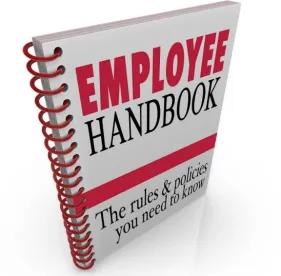You’re all set to fire an underperforming employee. You sit down for the disciplinary meeting and just as you start discussing her performance problems, she reveals she has back and neck pain due to work-related stress. What do you do? Here are practical steps you can take to handle this all-to-often workplace scenario.
Setting the Stage
Let’s look at the facts from a Tenth Circuit Court of Appeals case that dealt with this situation. Susan Bennett had worked as a Fiber Optic Tech for Paetec Communications, Inc. (Paetec) for twelve years. She was responsible for locating, repairing, testing and maintaining fiber optic cable in a service area covering parts of Oklahoma and Arkansas.
After Paetec was acquired by another company, Windstream Communications, Inc. (Windstream), Todd Moore became Bennett’s supervisor. Moore instituted a new policy requiring all technicians to check in at an assigned office each morning at 8 a.m. to allow for cross-training and to pick up company vehicles stored on the secured company premises.
Bennett was assigned to report to the Tulsa office each morning which required her to commute a total of almost four hours each day. She often arrived at the Tulsa office more than two hours late, or left several hours early to commute home. On a number of occasions, she failed to report to the office at all. Her time and attendance issues resulted in her being unable to complete a cross-training program that other technicians received.
A month or so after instituting the check-in policy, Moore and the company’s human resources specialist provided Bennett with a “final coaching” session which was the first step in the company’s progressive discipline policy. That same day, Bennett called to report that she was experiencing chest and shoulder pain due to work-related stress and had a doctor’s appointment the next day. The company directed Bennett to complete a workers’ compensation claim. She did and after she failed to return from her leave of absence, the company deemed her to have abandoned her job. She sued her employer, alleging her termination was due to gender and age discrimination. Bennett v. Windstream Comm., Inc., 792 F.3d 1261 (10th Cir. 2015).
Practical Steps To Avoid Liability
Disciplinary meetings do not always go as planned. As in Windstream’s case, employees sometimes disclose new information that raises a legal concern. When faced with an employee’s previously unknown medical condition, a new complaint about workplace harassment, or some other new issue, you should consider the following practical steps to help reduce the risk of liability for your organization.
Step #1 – Weigh Severity of Misconduct Versus Risk of Potential Liability
If an employee has engaged in severe misconduct, such as workplace violence, it may still be in your organization’s best interests to go forward with imposing the planned discipline or termination. As long as you are treating this person the same as any other employee who has engaged in this sort of severe misconduct, the risk of liability for a discrimination or failure to accommodate claim is likely low. In such cases, ensure that you have confirmed the facts supporting your discipline/termination decision and that they are properly documented before taking action against the employee.
For less severe infractions, such as attendance issues or failing to meet performance goals, however, moving forward with the planned discipline may be risky in light of the new issue(s) raised by the employee. You likely need more information about the person’s medical condition or newly asserted complaint before you can make an informed decision about your next steps.
In addition, you need to know whether the employee’s supervisor or anyone else in a decision-making capability had prior knowledge of the employee’s asserted medical condition or complaint. In these circumstances, your best practice is to inform the employee of his or her performance problems or misconduct at the meeting and explain the consequences of such conduct, but postpone imposing the discipline until you have had an opportunity to confirm the facts related to new information. If appropriate, you can place the employee on a paid administrative leave while you investigate the new issue.
Step #2: Have Written Policies and Follow Them
Good employment policies will provide you with a road map for how to handle most employee concerns. For example, if the employee asserts that she has been sexually harassed by her supervisor, follow your harassment policy and initiate an internal workplace investigation to determine whether harassment is indeed occurring at your facility. If so, take appropriate steps to remedy it. In the case of a newly revealed medical condition, determine whether it may qualify as a serious health condition under the Family and Medical Leave Act (FMLA) and then follow your FMLA policy, providing necessary notices and forms. As in Bennett’s case, if the employee alleges that the medical condition is work-related, handle it as a workers’ compensation claim and follow your workers’ comp procedures.
Step #3 – Provide Leave and Benefits to Which The Employee is Entitled
Once the employee has informed you of a medical condition, disability or other concern, your best bet is to provide them with the leave, reasonable accommodation or other benefits to which the employee is entitled. As frustrating as it may be that the employee waited until a disciplinary meeting to inform you of his or her condition, you now have knowledge of that information and you can’t put the genie back in the bottle. Sure, you can try to defend any potential claims by proving that you didn’t have knowledge of the condition when the actual discipline decision was made, but that sort of defense is fact specific and will be difficult to get resolved early in the case. If you want to avoid potential liability, it is best to offer any leave and benefits for which the employee is eligible.
Step #4 – Be Patient
It’s tough to back off on your planned discipline and “be nice” to a poor performing employee while he or she is out on leave or is getting medical treatment. It’s especially difficult in cases where you suspect that the employee may be manipulating the laws in order to avoid getting fired or being placed on a performance improvement plan. But be patient.
Let the workers’ compensation claim or FMLA leave run its course. At that point, the employee either comes back to work and is expected to perform up to your standards, or is unable to return to work. If the employee’s condition does not allow for a return to work, consider whether the employee’s condition is a disability covered by the Americans with Disabilities Act (ADA). If so, engage in an interactive process to determine if a reasonable accommodation would permit the individual to perform the essential functions of his or her job. A reasonable accommodation may include providing additional time off to complete medical treatments or recover, but you are not required to provide an indefinite period of leave. If you are patient and provide all required benefits until they are exhausted, you often are presented with clear, low-risk options for resolving the employment situation.
Step #5 – With Proper Documentation, Proceed With Discipline/Termination
An employee who engages in misconduct or performs poorly does not become “untouchable” simply by asserting a medical condition or harassment complaint. You may still hold them to your performance and conduct standards. First, be sure you have communicated your standards to the employee through an employee handbook, training and/or performance reviews. Second, ensure that the employee’s infractions or poor performance issues are properly documented in an objective, fact-based manner. And third, be certain to treat this employee the same as any other employee who has engaged in similar misconduct or poor performance. If you’ve met these criteria, you will minimize the risk that the discipline or termination you impose will result in liability.
Conclusion
Taking action to discipline or fire an employee is rarely risk-free. Taking such action after an employee reveals a medical condition, disability or other concern raises the stakes even higher. But you can minimize the risk of a lawsuit if you stay calm, follow your policies, and provide any rights and benefits to which the employee is entitled. Take each new development step-by-step and you will reduce the chance that you will need to defend your decisions in court.



 />i
/>i
